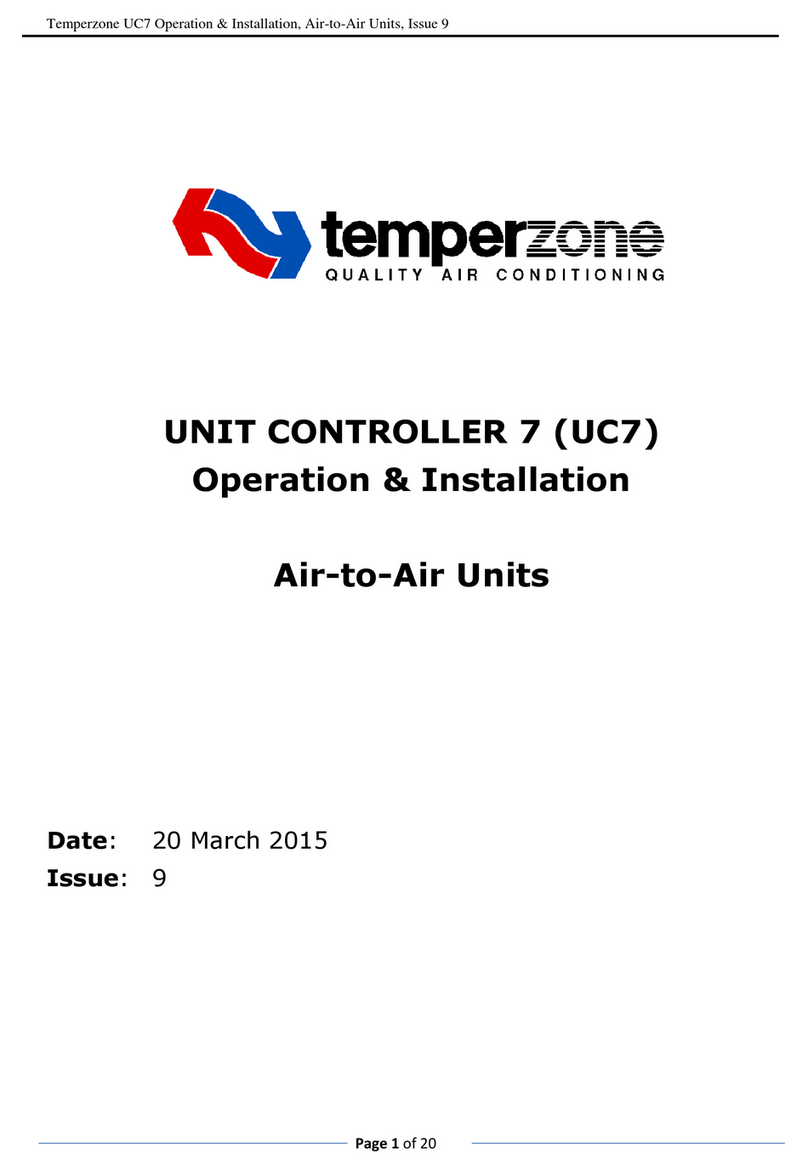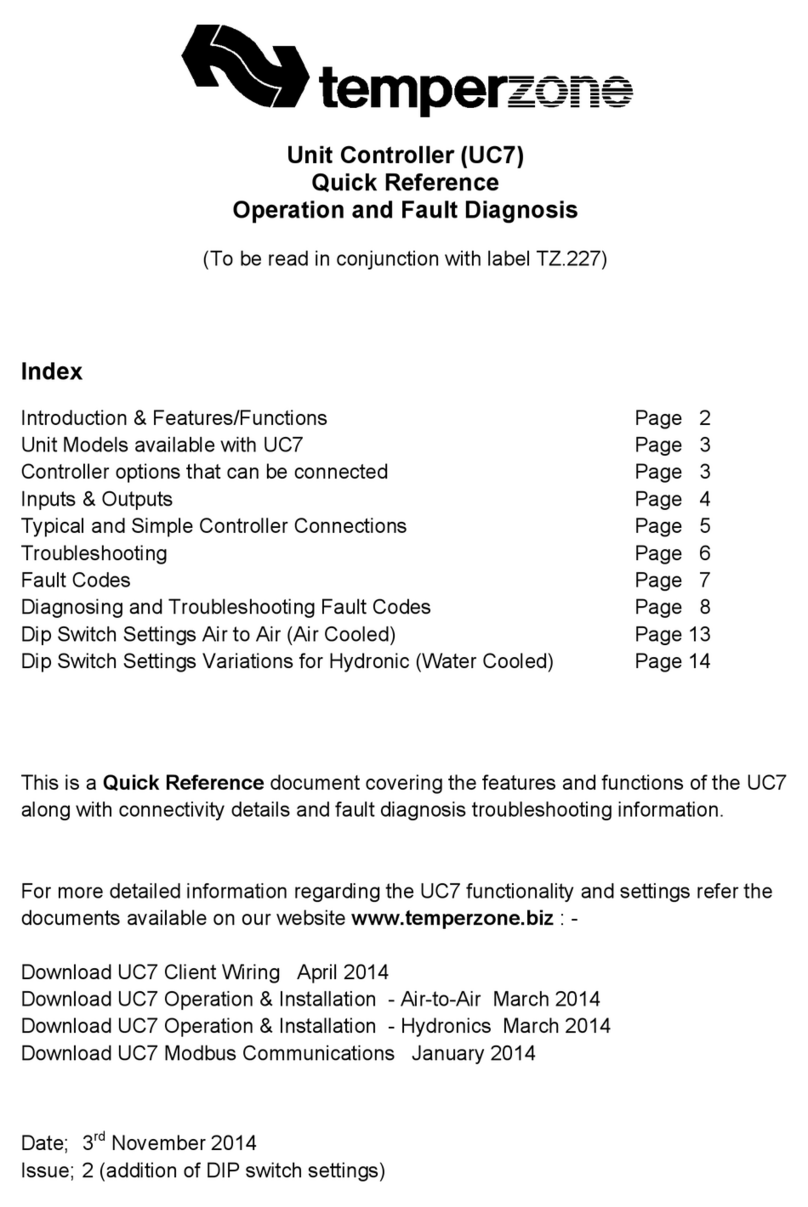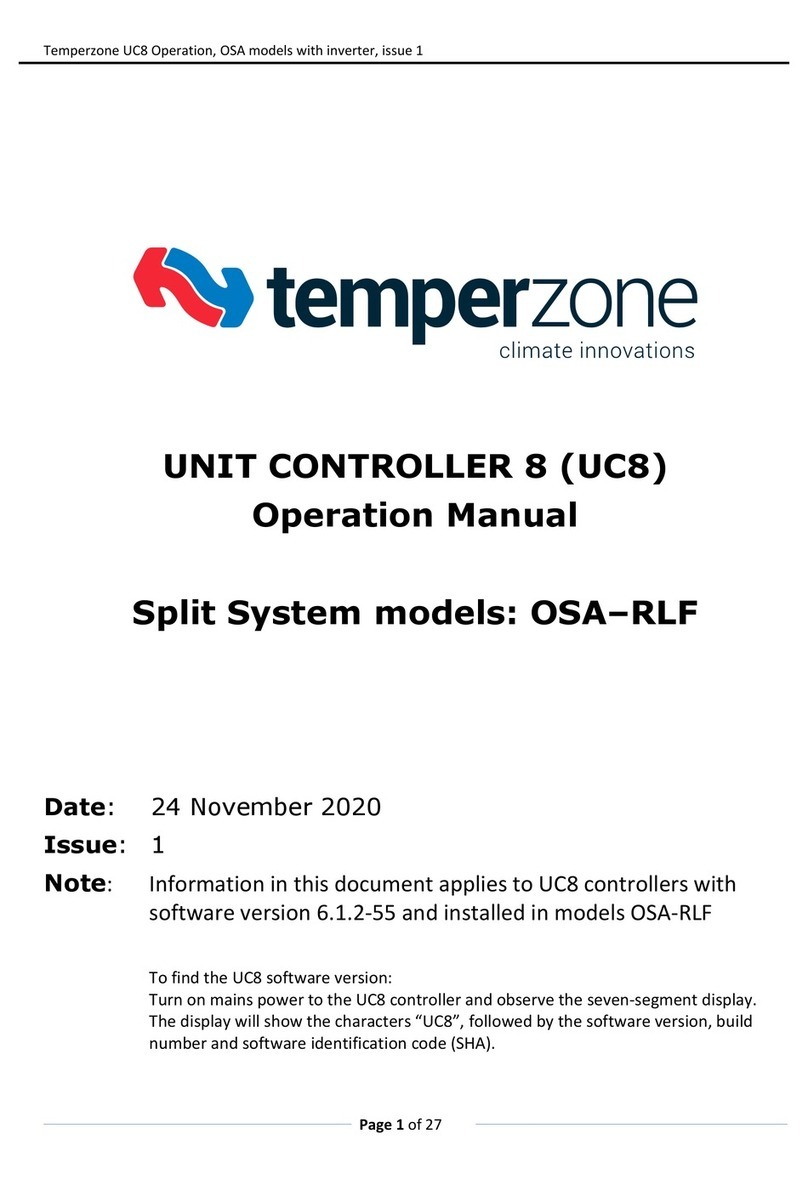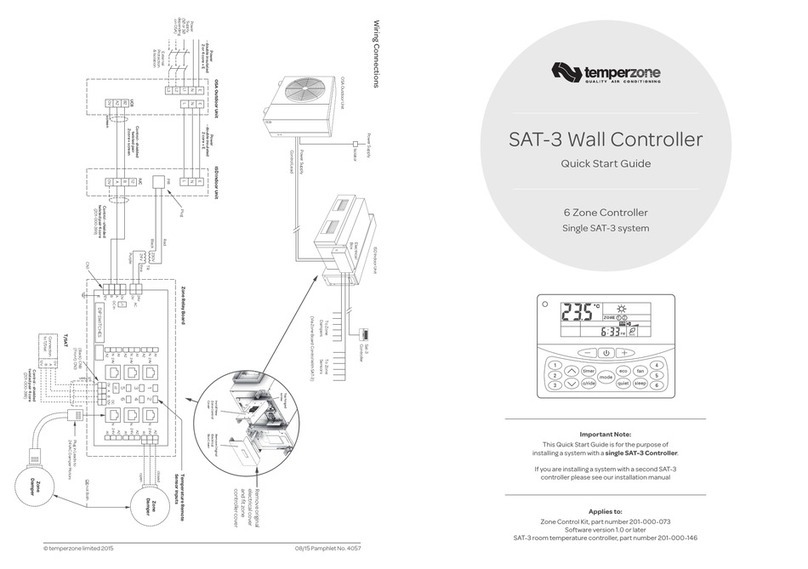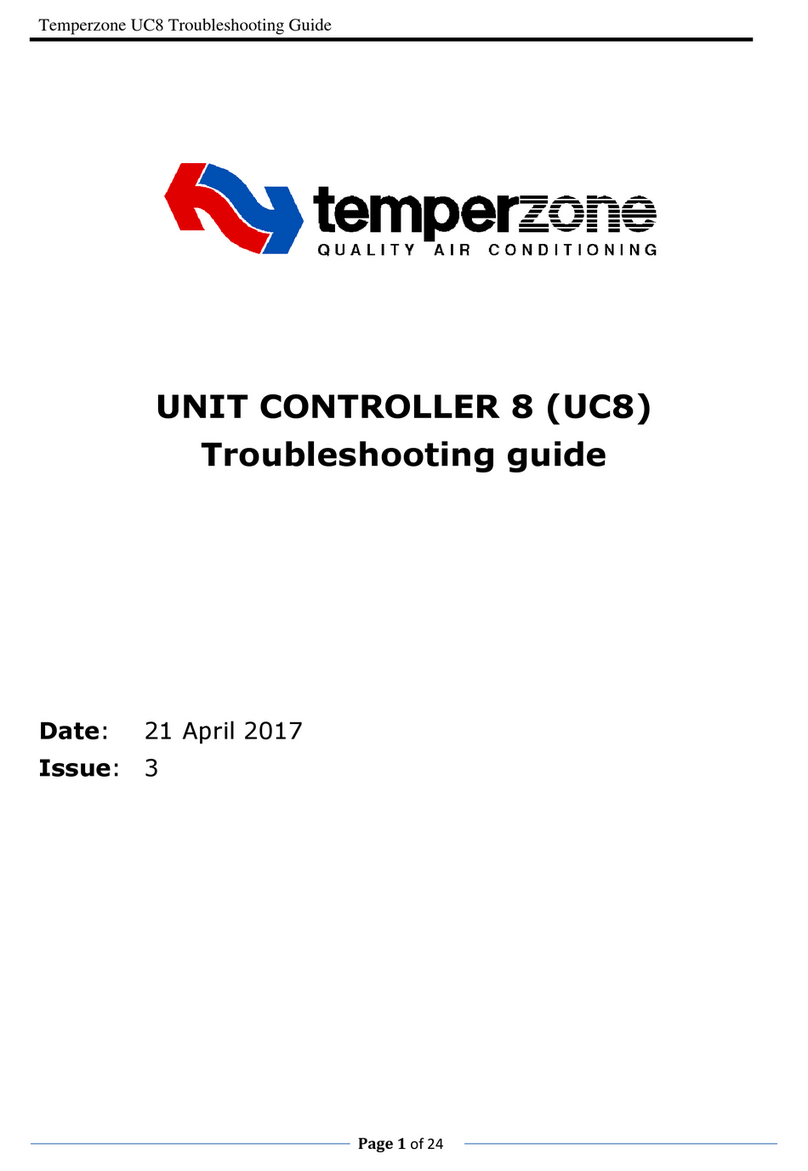
Temperzone Unit Controller 6 - Operation and installation- Hydronic Issue 1
Page 2 of 21
Contents
1. Introduction ....................................................................................................................................... 4
2. Features ............................................................................................................................................. 4
3. Lower board connections .................................................................................................................. 5
3.1. Power supply terminals .............................................................................................................. 6
3.2. Output terminals ......................................................................................................................... 6
3.3. Input terminals ............................................................................................................................ 7
4. Upper board connections................................................................................................................... 9
4.1. Digital input signals .................................................................................................................... 9
4.2. Digital output signals ................................................................................................................ 10
4.3. Analogue output signals ........................................................................................................... 10
4.4. Communication ports ............................................................................................................... 11
4.4.1. Temperzone TZT-100 thermostat connection ...................................................................... 11
4.4.2. Power+ inverter driver connection ....................................................................................... 12
4.5. Electronic expansion valves ..................................................................................................... 13
5. Operation ......................................................................................................................................... 13
5.1. Remote on/off ........................................................................................................................... 13
5.2. Variable duty units ................................................................................................................... 13
5.3. Water flow valve Y2 ................................................................................................................ 13
5.4. Indoor fan control ..................................................................................................................... 14
5.5. Heating mode ........................................................................................................................... 14
5.6. Crankcase heater ....................................................................................................................... 14
5.7. Electronic expansion valve control .......................................................................................... 14
5.8. Demand response management ................................................................................................ 15
6. Protection functions ..................................................................................................................... 15
6.1. Minimum compressor run time ................................................................................................ 15
6.2. Minimum compressor off time ................................................................................................. 15
6.3. Minimum compressor cycle time ............................................................................................. 15
6.4. High pressure protection (HP) .................................................................................................. 15
6.5. Loss of refrigerant protection (LOR) ....................................................................................... 16
6.6. High suction line temperature (HiST) ...................................................................................... 16
6.7. Indoor coil frost protection (FROST) ....................................................................................... 16
6.8. High discharge line temperature protection (HDT).................................................................. 17
6.9. No Water Flow Protection ........................................................................................................ 17
6.10. Water Float Protection .......................................................................................................... 17
6.11. Low output water temperature protection ............................................................................. 18
6.12. Compressor lock-out ............................................................................................................. 18
6.13. Sensor alarm ......................................................................................................................... 18
6.14. Loss of RS485 communications alarm ................................................................................. 18






